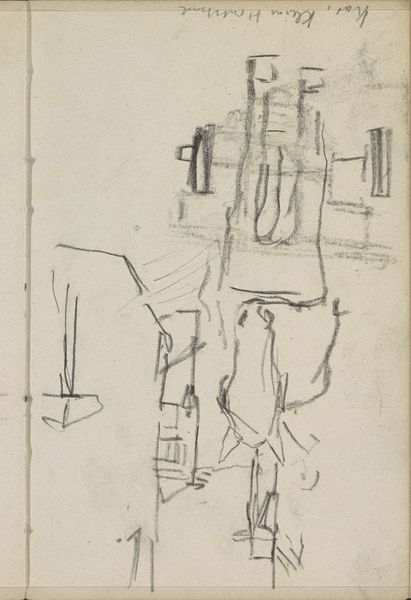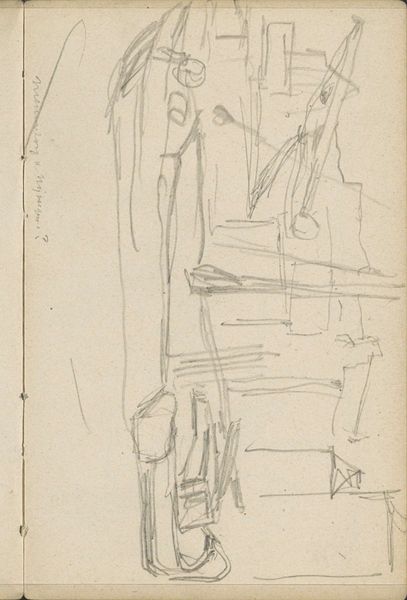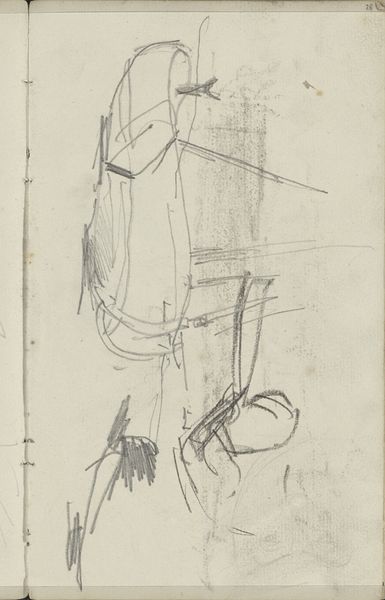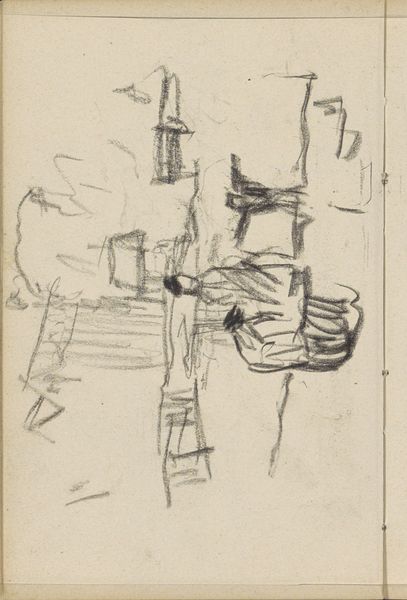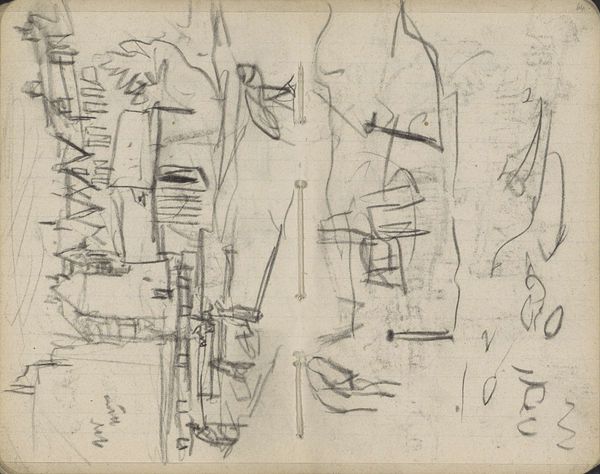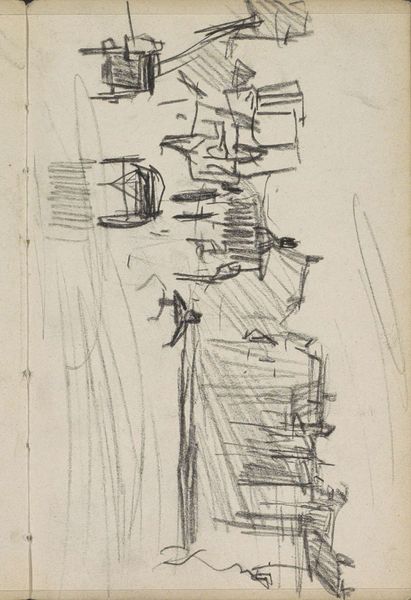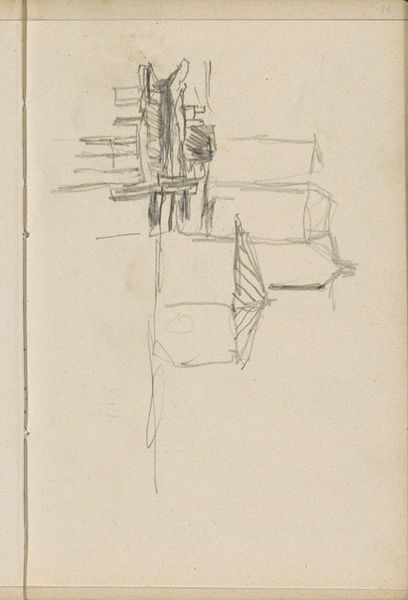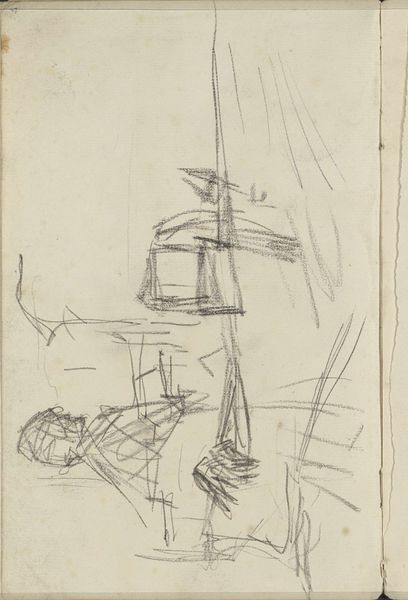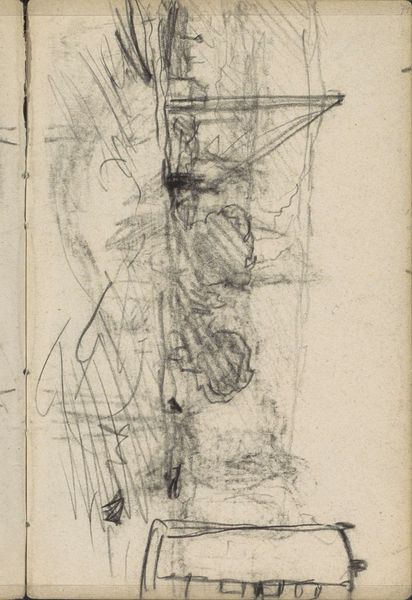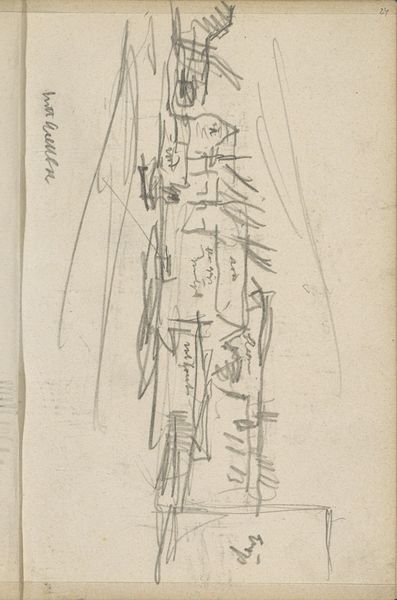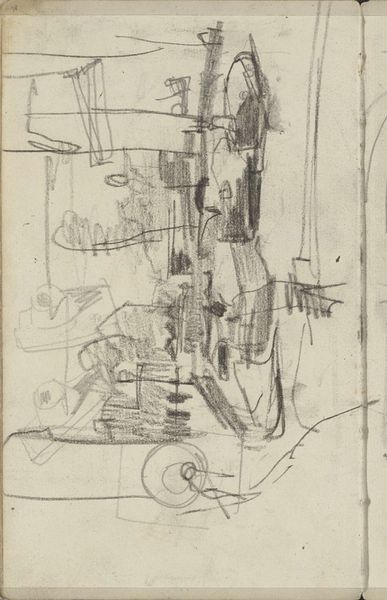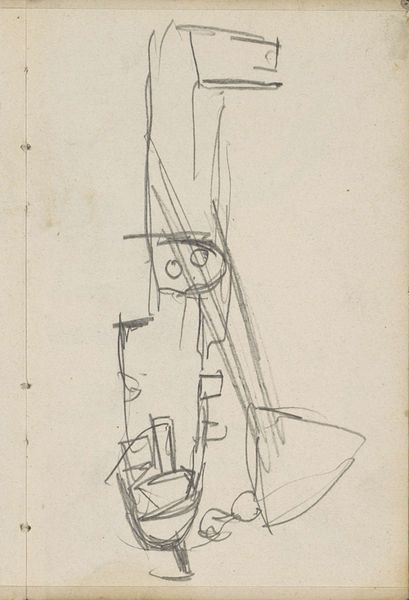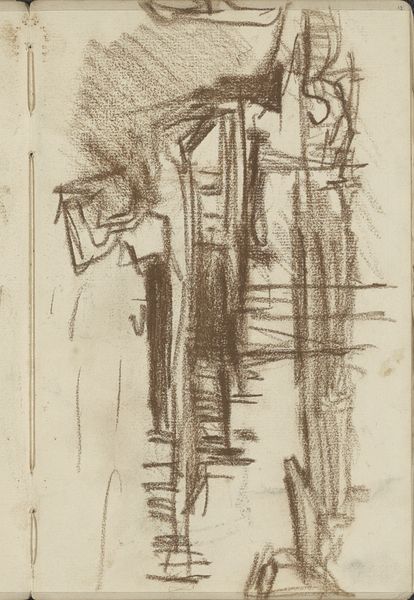
Copyright: Rijks Museum: Open Domain
Curator: Looking at George Hendrik Breitner’s “Ships at the Barentszkade in Amsterdam," thought to be from somewhere between 1892 and 1923, the sketch feels so immediate and raw. Editor: There’s an undeniable sense of transience and urgency captured by this almost chaotic network of lines. I can see how Breitner quickly and skillfully registered the vessels on the Barentszkade through the pencil, exploring their weight and volume, however abstractly. Curator: For me, the network of verticals against horizontals conjures images of both church steeples reaching up and coffins being lowered into the earth. I’m struck by the juxtaposition of ambition and mortality in Breitner’s landscape, amplified through a subdued modern sensibility. It gives Amsterdam a rather ghostly allure. Editor: The urban cityscape seems almost to dissolve; notice how he barely distinguishes land, water, and structure. It's so sparse in detail yet so rich in implication, prompting speculation on whether it’s finished, whether it’s preparation. Was he just testing a new graphite? I like imagining him gripped by the immediacy of his task in situ, recording ships quickly being unloaded in the city docks. Curator: And don't you think these ships evoke a bygone era? They feel like cultural carriers themselves, traversing great distances to contribute to Amsterdam's bustling heart. The sketch serves as an index of both personal artistic expression and broader cultural movement. Editor: Certainly. As a piece likely jotted in situ on paper—a ubiquitous and accessible material—this landscape reveals the mundane origins of artistic production; the drawing could even come from notebook paper, if you notice its binding. It stands as a quiet witness to the working practices that constitute both art history and the shipping history it depicts. Curator: What a thought. Thanks for expanding my perspective here. I now see the quayside traffic in the pencil strokes, reminding us that art comes out of lived, grounded material circumstances. Editor: Indeed! Now the layered graphite feels as loaded and substantive as a shipment itself, charting not just Amsterdam’s past, but the means of how it has come to be remembered today.
Comments
No comments
Be the first to comment and join the conversation on the ultimate creative platform.
